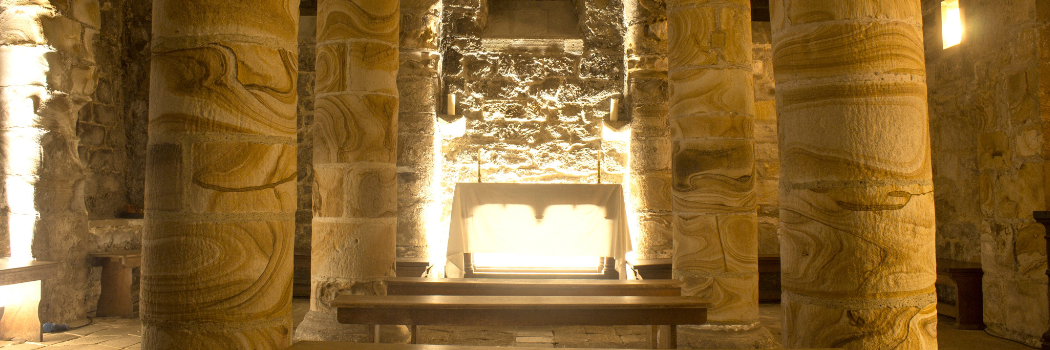
The first phase of a long-term project to preserve and restore the Norman Chapel at Durham Castle, the oldest standing building in Durham City, has now been completed. A programme of essential work has been carried out over the past two years to preserve this important building and restore it to use.
During the 19th century, the earth around the exterior of the Chapel was built up, until it was almost underground and causing it to suffer from damp. Over the years, this caused damage to the stonework and the deterioration of the condition of the Norman Chapel.
This project has involved extensive external conservation work, including the excavation of the 5 metres deep trench around the outside wall of the Chapel, to remove the cause of the damp. The trench revealed the original exterior wall, buried for centuries and exposed buried windows, allowing more light into the Chapel.
Inside the Chapel, specialist conservators from Hirst Conservation have worked on studying and conserving the stonework, including the 11th century sculptures to the capitals of the columns. They have now completed essential work, which will allow the stone to dry out safely and help to prevent any further damage.
Windows made to the original style and with traditional materials have also been repaired and replaced, to maintain the authenticity of the Chapel.
Throughout the project, a team of artists, technicians and conservators dedicated to digital mediation, from specialists Factum Arte have documented the Chapel as a cultural heritage site developing new techniques of digital preservation and restoration. Their work included a complete 3D recording of the Chapel, using photogrammetry and a LiDAR scanner to help inform the restoration project by providing accurate surface and colour information. Factum Arte are now assessing the information they have gathered and will be making recommendations on how to preserve the stonework for the future.
This first phase of the project was part funded with £80k provided by the Wolfson Foundation towards the cost of restoration.
The next stage of the project is the drying out phase, which is expected to take around five years. Once the walls are completely dried, the damage will be assessed and next phase of the restoration work will begin on the long term conservation of the Chapel.
Because of its architectural and historical significance, the Norman Chapel is one of the most historically important spaces in Durham City. This has been recognised by its Grade I Listing, as well as its inclusion in the first inscription of the Durham UNESCO World Heritage Site in 1986. It attracts visitors, academics and pilgrims from across the world, who are able to research, enjoy and reflect in this impressive space.
All work on the Norman Chapel and around the Castle was carried out under a strict archaeological watching brief, to identify and assess any unexpected issues or archaeological finds that might have come to light.
Curators from Durham Castle have been able to implement improvements to the accessibility, interpretation, lighting and presentation of the Chapel. This is great news for visitors as the Chapel is now re-opened and can be seen as part of the Castle Guided Tour.
Durham Castle is already planning its next exciting new project for Fellow's Garden. Work is due to start in early autumn on the construction of a terrace area within the walled garden with improved access to the public and facilities. The aim is to create an outdoor space for community events to take place, opening the Castle and World Heritage Site up to welcome more visitors.






